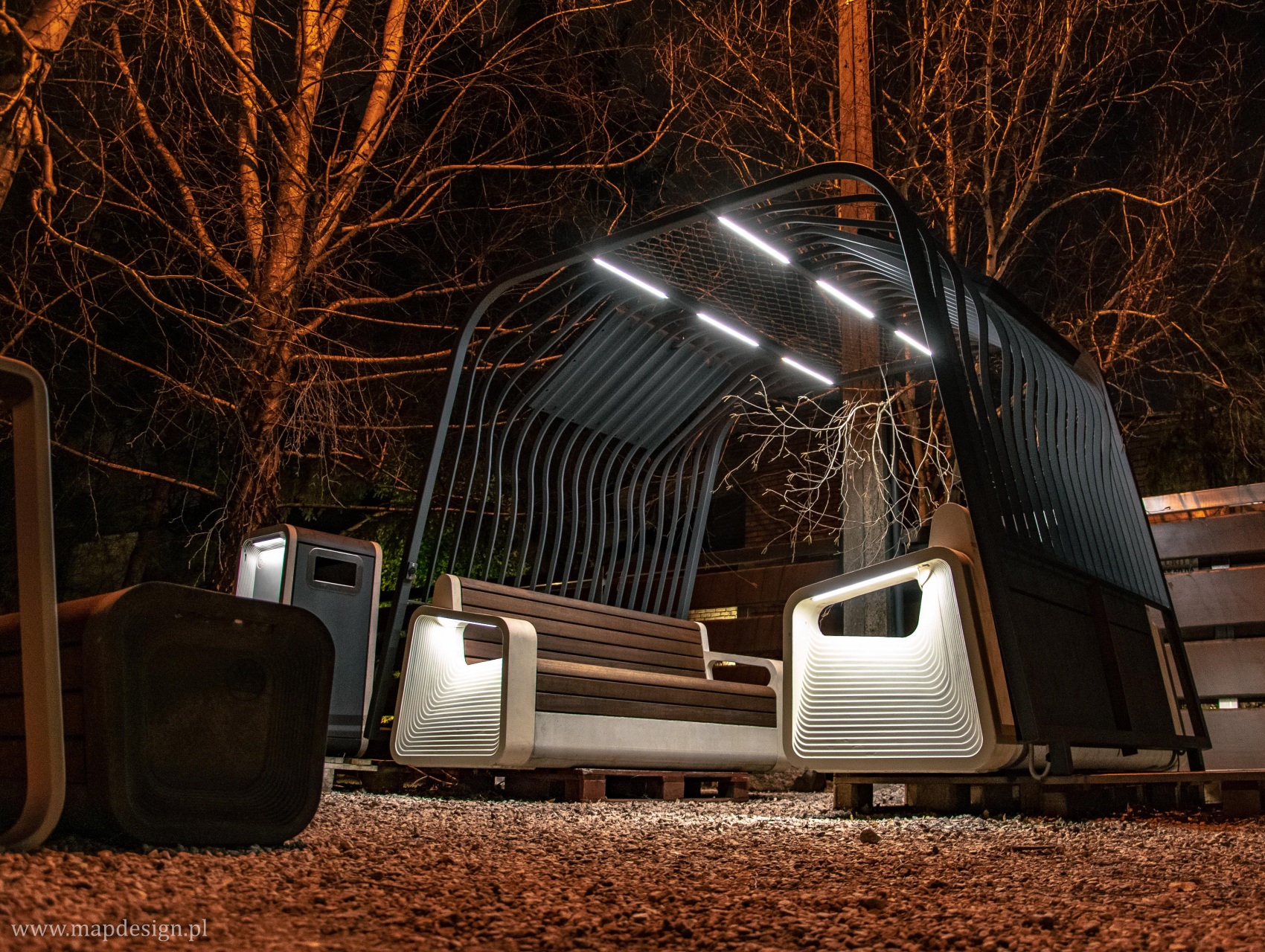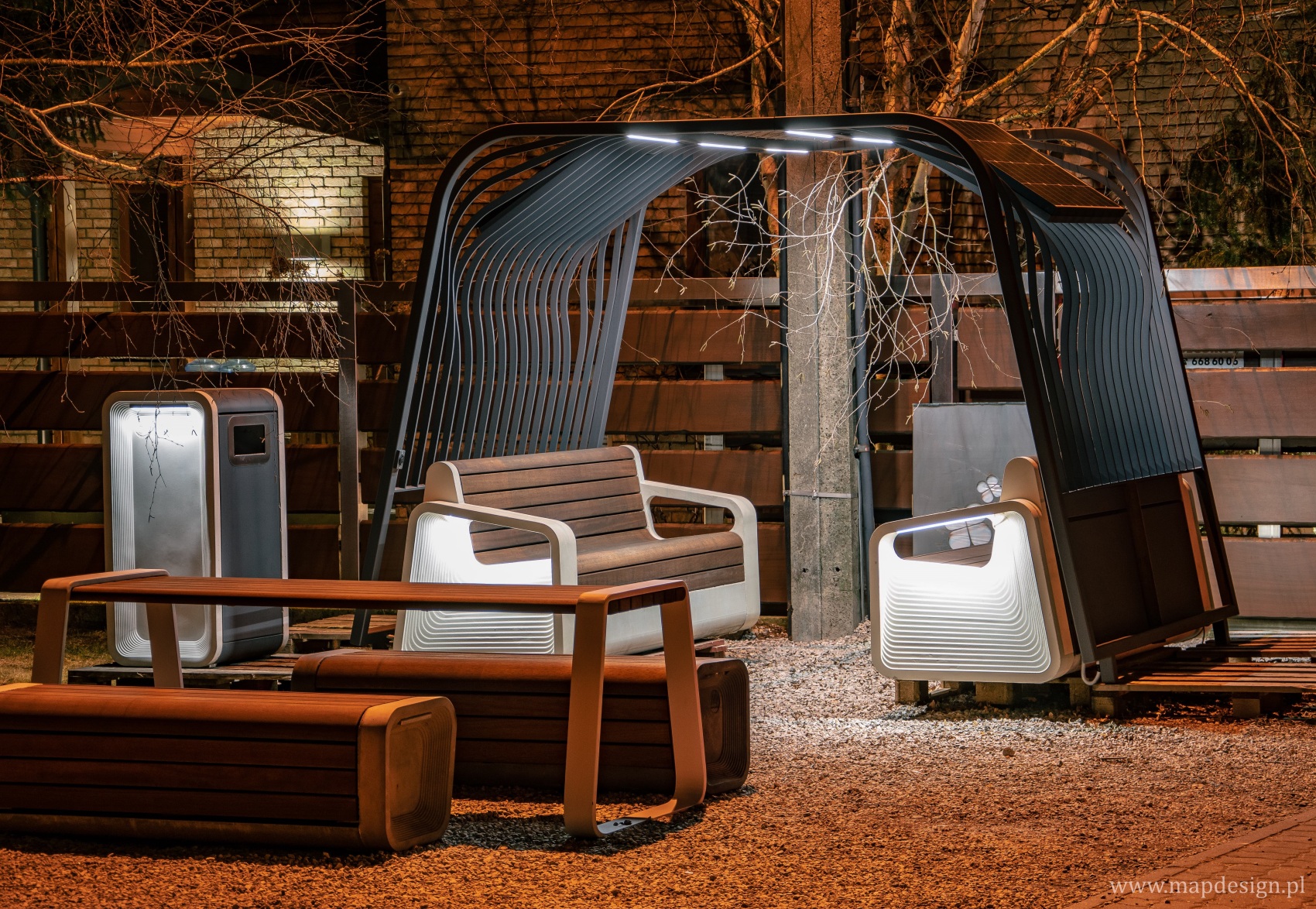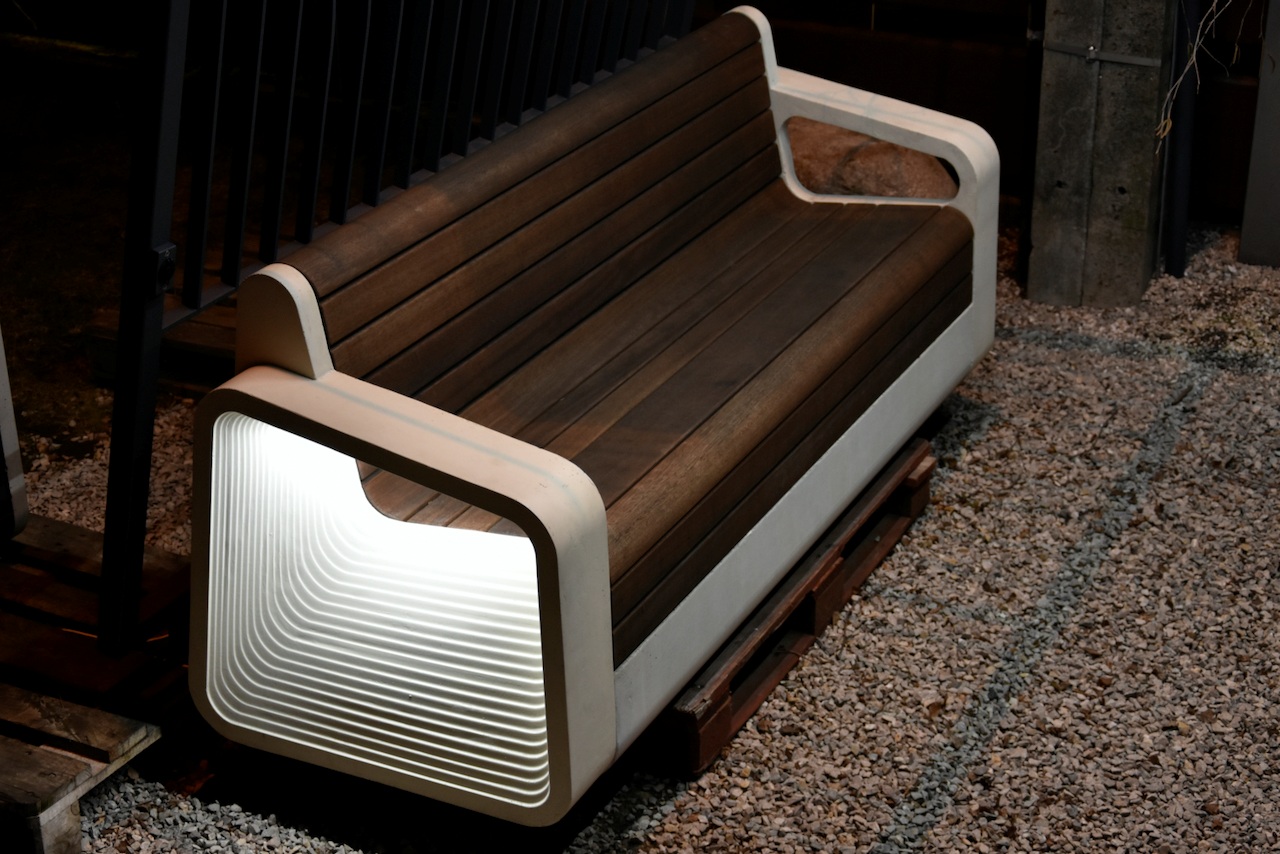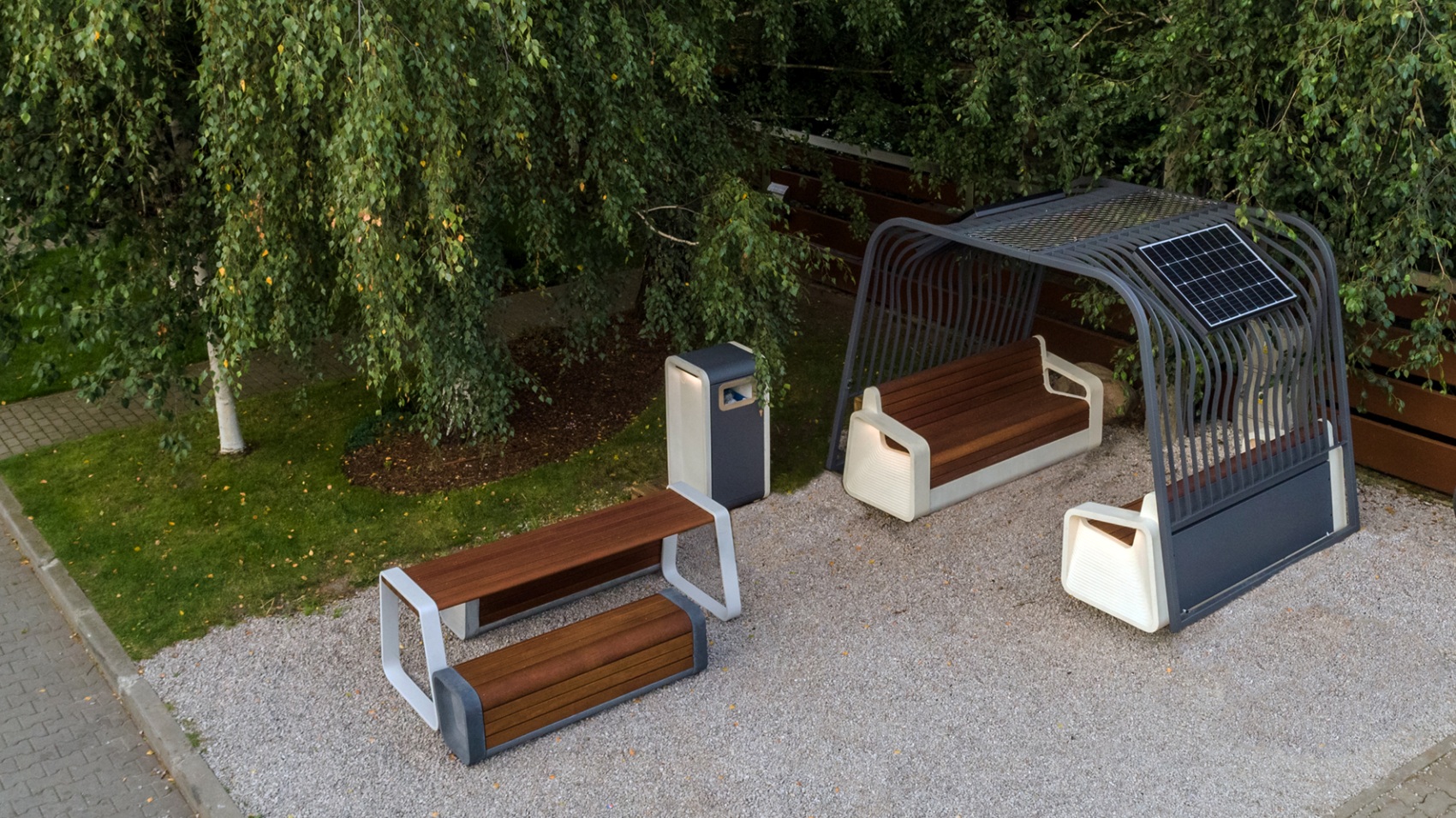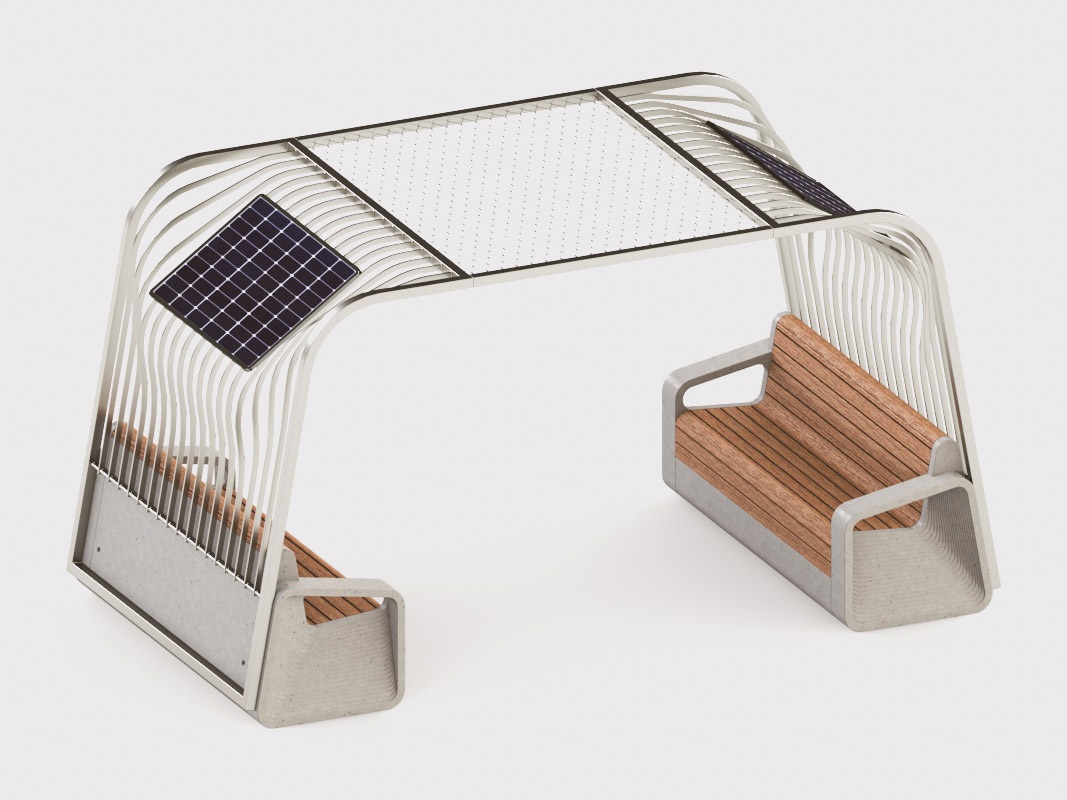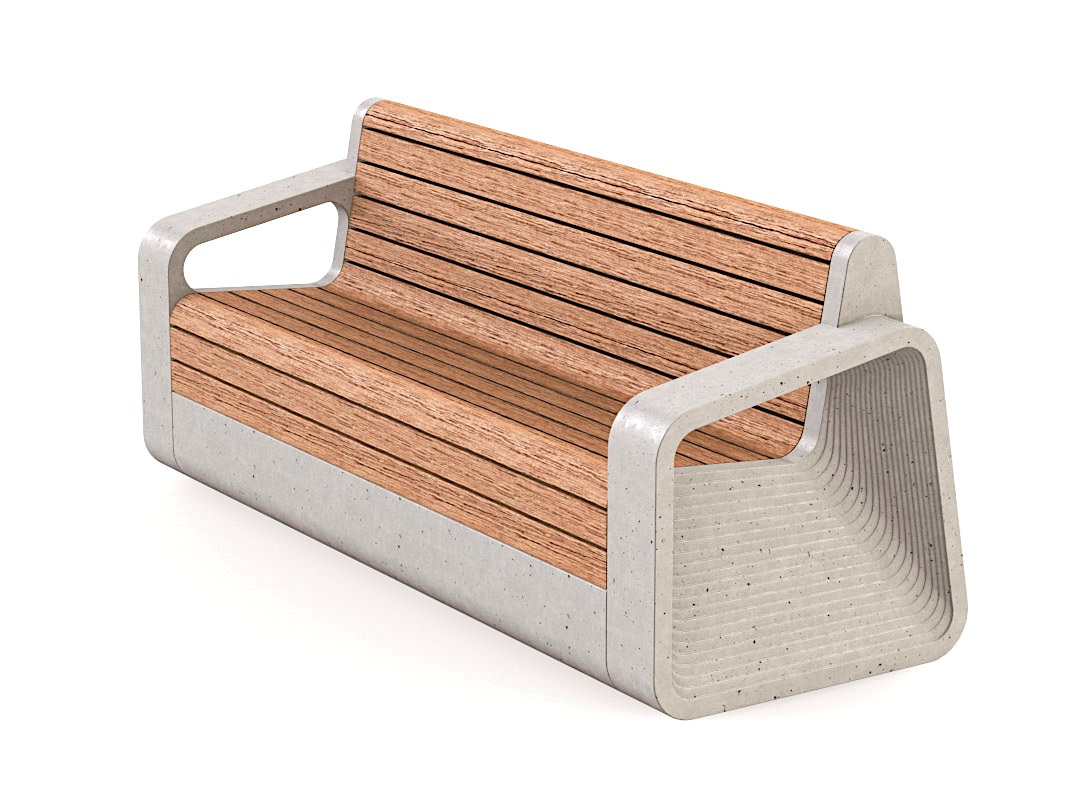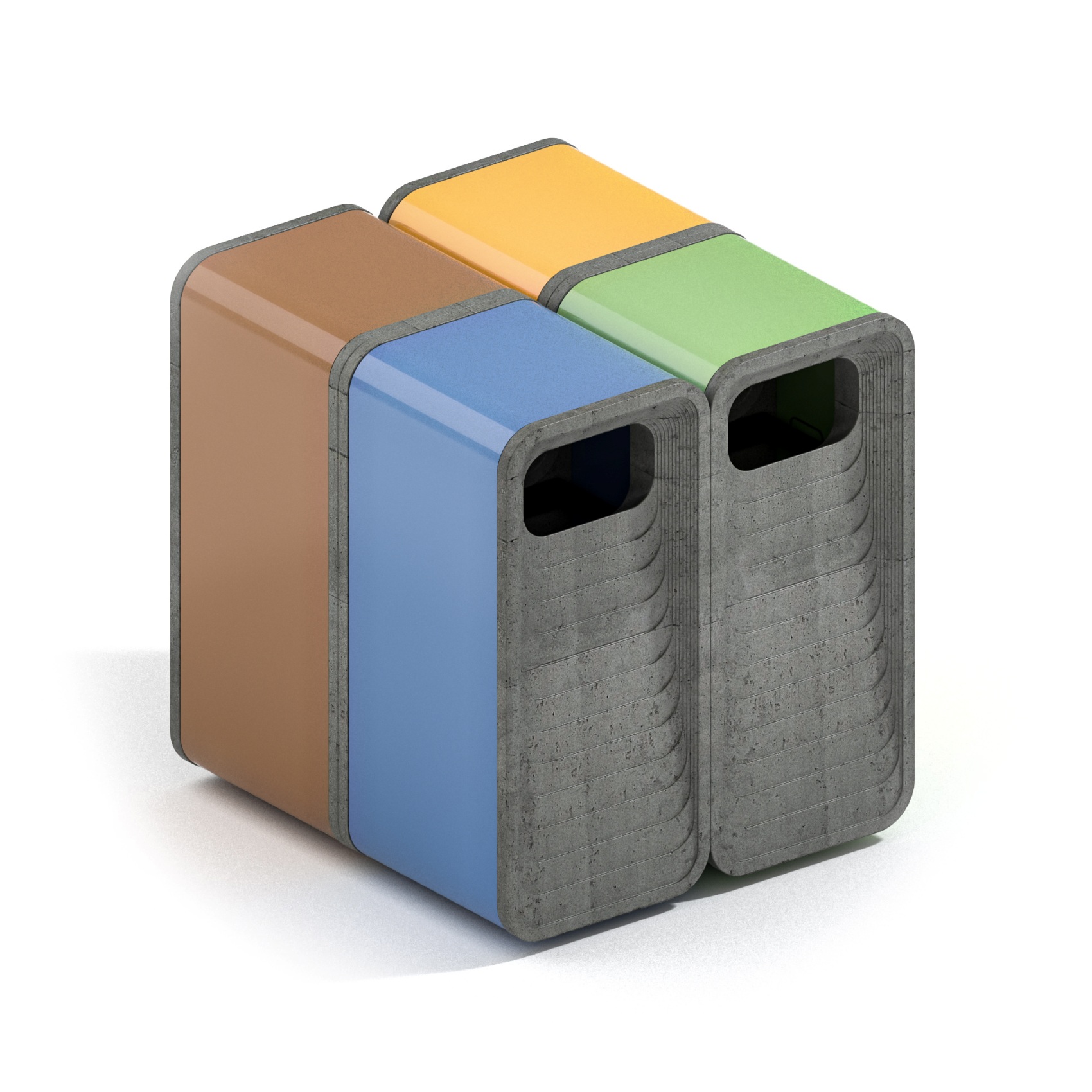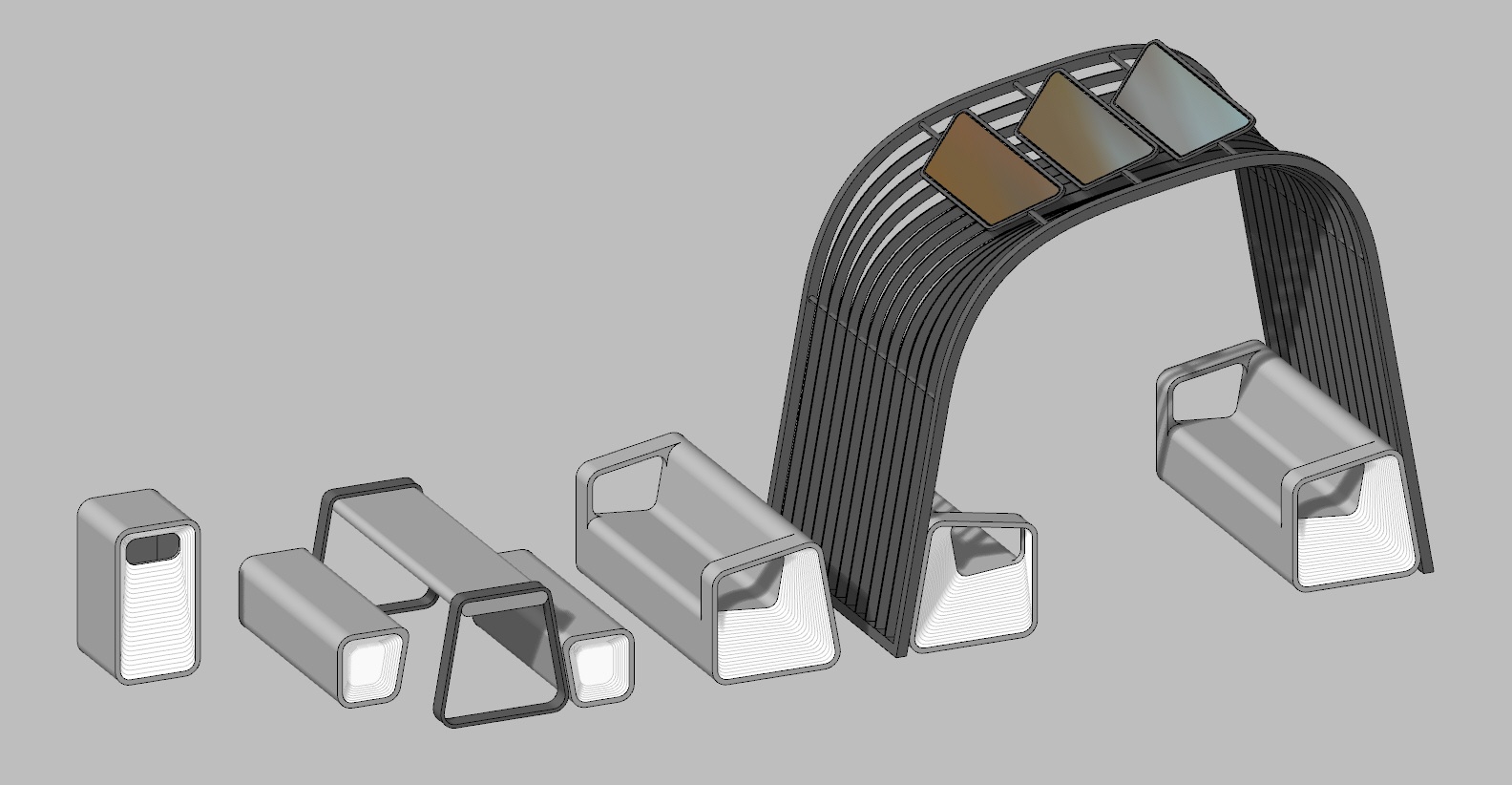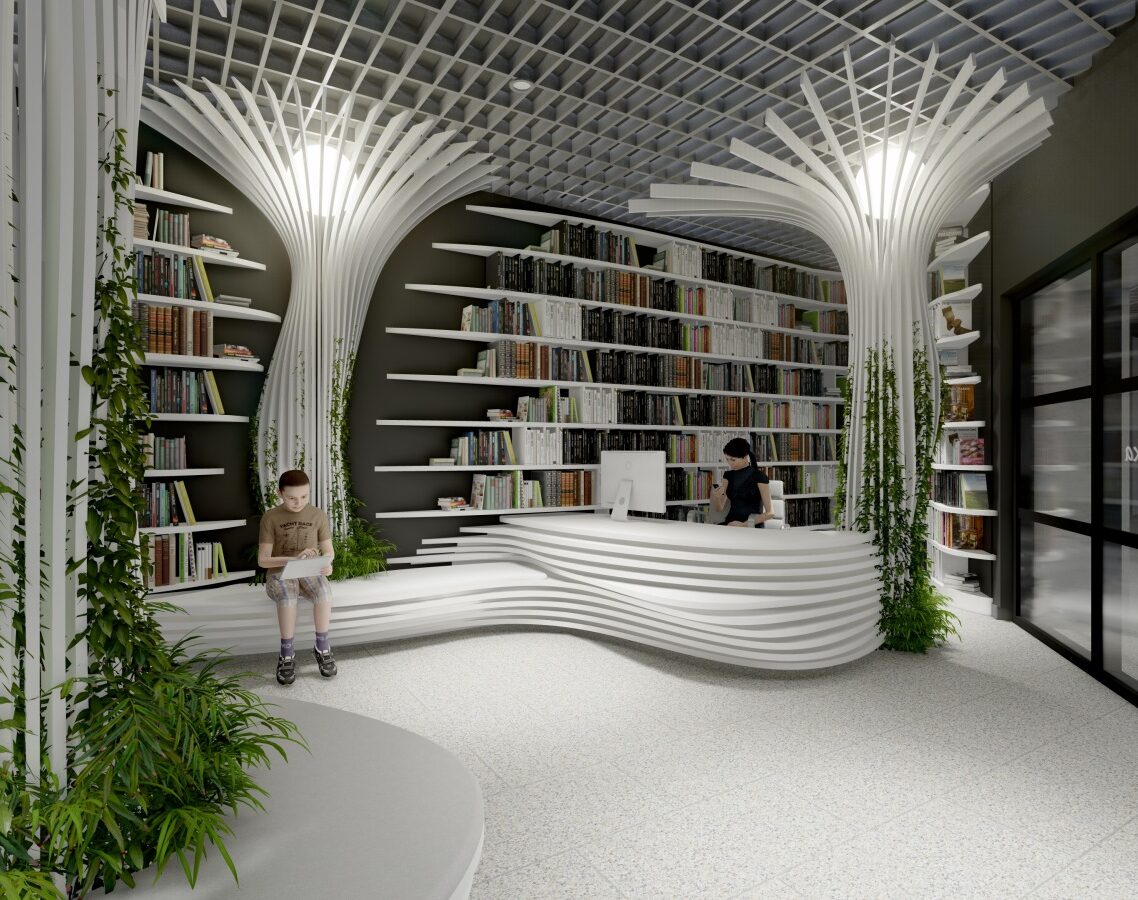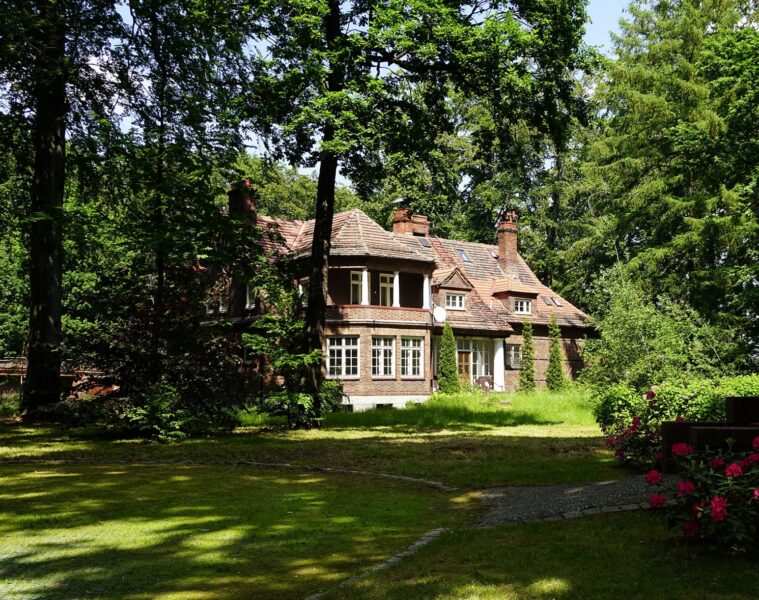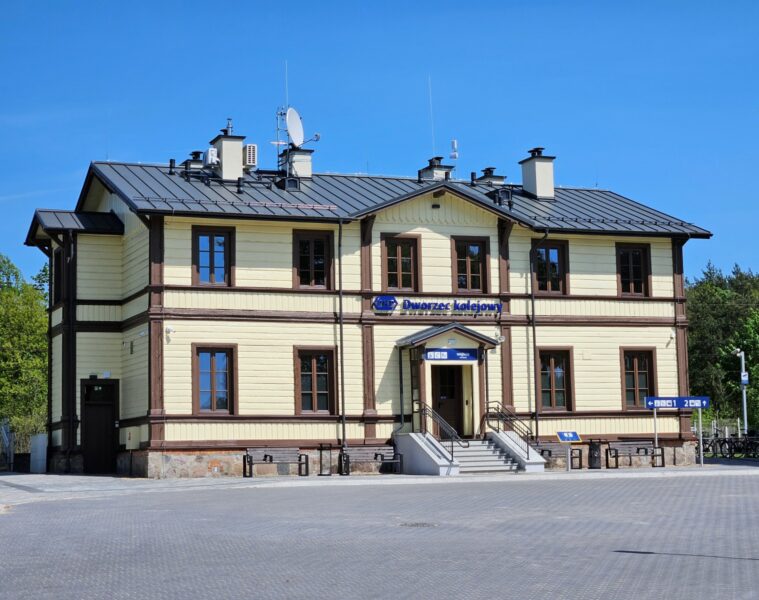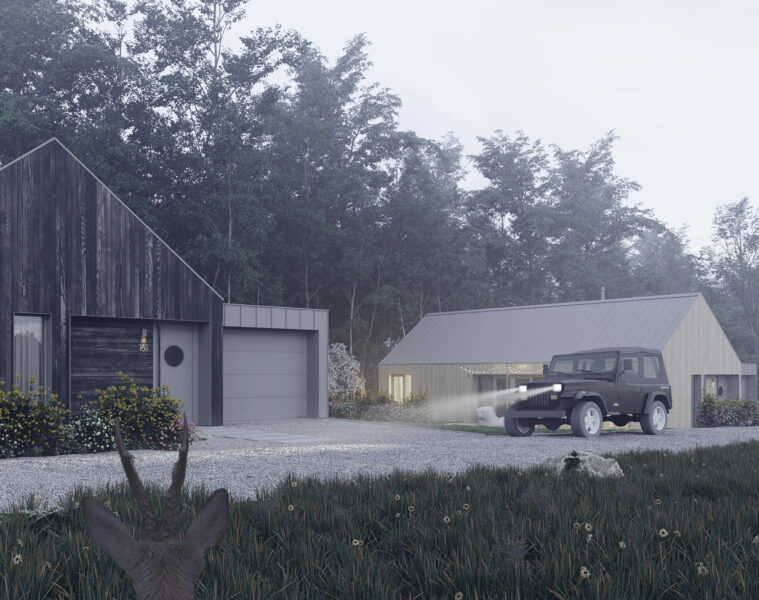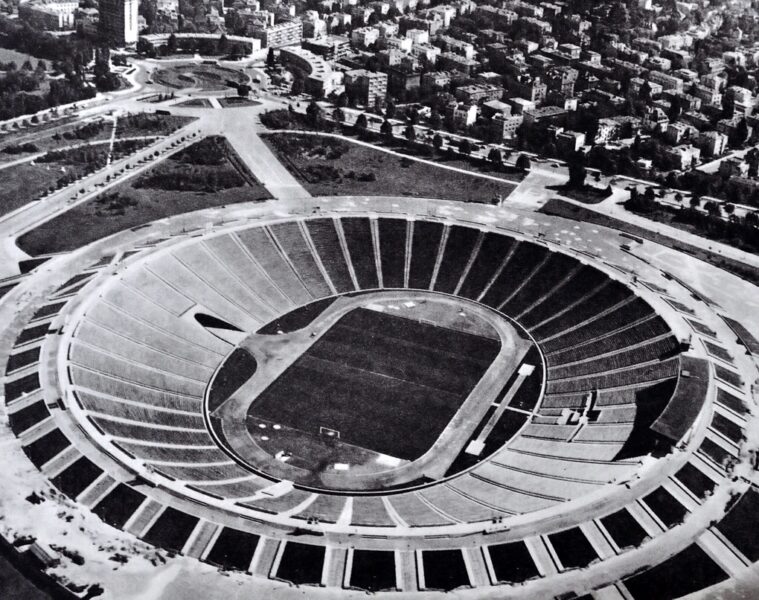They are an important part of the urban fabric. Elements of small architecture have a huge impact on how we perceive the city and how we spend our time in public space. The #smartcity furniture collection was designed by Marta Przybylska and Tomasz Wieteska of the MaP Design studio. The series won the title of ‘Innovator of Mazowsze’ in a competition organised by the Marshal’s Office of the Mazowieckie Voivodeship.
The furniture designed by MaP Design was not far away from being present on the streets of Warsaw. In 2018, architect Marta Przybylska designed a series of urban furniture, which she entered into a competition organised by the city.
We were one point short of winning and realising it, but in a social poll our furniture received the most likes from residents and supporters of the capital. This encouraged us to create another set of urban furniture, this time conceived as a combination of design, technology and contemporary lifestyle,’ says architect Marta Przybylska.
The #smartcity collection on display was designed by Marta Przybylska and Tomasz Wieteska, with Puczyński Mała Architektura responsible for production. The modern urban furniture #smartcity was designed for public spaces and responds to an important social need, which is the desire to spend time outdoors, in close contact with nature, while caring for this environment.
The products included in the design line are an urban bench with backrest, a pergola, a picnic set and a waste basket. The composition of the line responds to the demand of users of public spaces, repeatedly reported to the manufacturer, i.e. Puczyński Mała Architektura, in the form of requests for proposals. Aesthetically, the entire collection was intended to be a meeting of modernity and technology in a universal design, with a distinct visual identity, difficult to plagiarise and vandal-proof.
The basic piece of furniture in the set is a bench with a backrest. It is a piece of furniture distinguished by its strong solidity. Its seat of wooden rungs transitions into concrete planes, enclosing the whole in a soft form with rounded corners. The rawness of the concrete and geometric precision is softened by the ornamentation in the form of a drawing of repeated lines embossed in the concrete supports. The porous texture of the concrete in the structural elements provides a balance to the warm wood texture on the seat and backrest. The benches have built-in lighting powered by electricity or solar energy through photovoltaic panels placed above the bench on a steel trellis. With this arrangement, a battery is mounted in the centre of the bench, accessible through a steel cover on the back. It is also possible to equip the bench with splash-proof charging sockets for mobile devices, which are placed in the plinth or at the back of the backrest and powered similarly to the lighting.
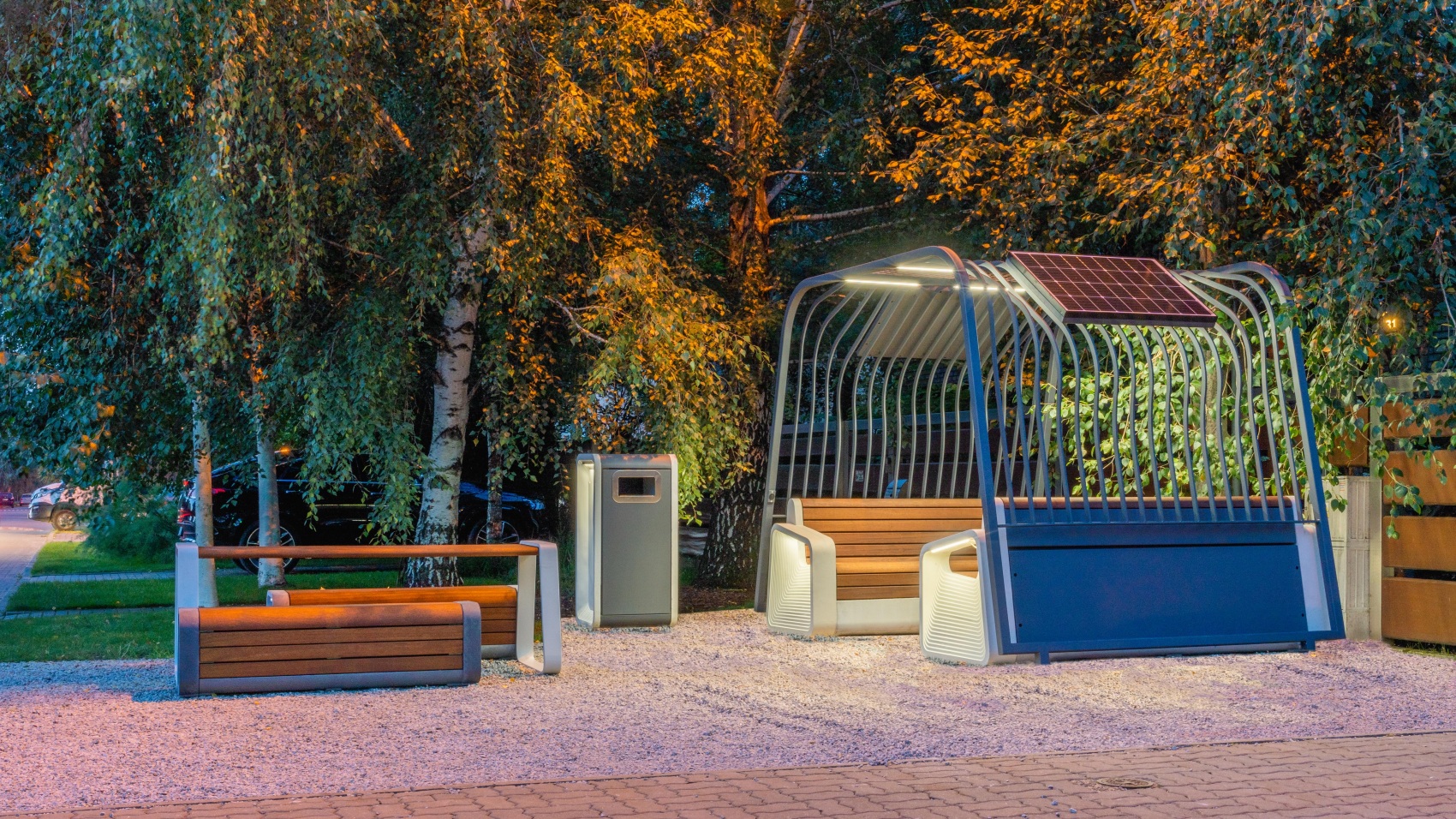
Another element of the urban furniture set is the pergola, which consists of two benches together with trellises that provide support for climbing plants or photovoltaic panels. The upper plane connecting the two trellises is filled with a lightweight metal mesh, allowing the transition between the benches and the width for the entire pergola to be adjusted. A strong and decisive visual identity is expressed in the undulating curves of the trellis, which have their counterpart in the converging geometric lines of the concrete ornaments in the structure of the benches. The treyuz is made of steel rods, powder-coated in any colour and has built-in light lines as an option of choice. In the absence of electricity, the lighting and charging sockets for mobile devices are powered by photovoltaic panels.
The forms of the pergola elements have been developed to allow multiple configurations to be built, depending on the needs and size of the destination. It can be used to create walkways lined with plants or meeting corners with a small table.
Another piece of furniture is the picnic set. The architects designed it from a table and two benches with an asymmetrical seat length, which allows a person in a wheelchair to approach the table.
The compositional idea of juxtaposing solid and translucent planes was transferred here to the arrangement of concrete elements of the bench structure and the openings outlined by the steel profiles of the table supports. Thewooden rungs of the seat, together with the concrete bases, enclose the seats in strong blocks, counterbalanced by the light form of the table,” explain the authors of the project.
The waste basket is designed as a closed form, with an opening protected against bird penetration. A special collar inside is designed to prevent them from pulling out the rubbish. The housing, including the service door, is made of steel panels, painted in any colour. The bins have built-in lighting to accentuate the design of the form, as an option. They can also be equipped with a fill level sensor, a location sensor and a fire sensor, linked to an application that processes this data and facilitates management and optimises servicing (e.g. emptying of bins according to need, quick retrieval after moving, etc.). The bins can be combined into arrangements for segregation painted in the statutory colours.
The collection is made of three materials: powder-coated steel, natural wood and GRC (Glassfibre Reinforced Concrete). It is a more durable and long-lasting material than traditional concrete, with great aesthetic qualities and the possibility of precise shaping. It can be mass-coloured in any colour. CNC technology is used to produce the mould, ensuring computerised precision. The plastic properties of concrete also make it possible to individualise the furniture with any company logo or city crest.
source: MaP Design
Read also: Urban furniture | Warsaw | Curiosities | Detail | whiteMAD on Instagram

